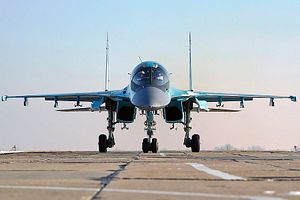Russia has created a new military branch, the Aerospace Forces, by merging the Russian Air Force with the Russian Aerospace Defense Forces, TASS reports. The $60 billion reorganization appears to be a direct response to the perceived increased risk of NATO air and missile attacks on Russian soil — in particular, the United States military’s Global Strike program has the Kremlin worried.
The new service branch, officially called the Aerospace Forces of the Armed Forces of the Russian Federation, became operational on August 1, according to Russian Defense Minister Sergey Shoigu.
“On August 1, the Russian president signed decree No. 394 on appointing the Colonel-General [Viktor Bondarev] as the commander-in-chief of the Aerospace Forces, Lieutenant-General [Pavel] Kurachenko as chief of the Main Staff and first deputy commander-in-chief of the Aerospace Forces, Lieutenant-General [Alexander] Golovko as deputy commander-in-chief of the Aerospace Forces and commander of the Space Forces,” Shoigu said.
The Aerospace Forces will be subdivided into the air force, air and missile defense troops, and space forces. “Now the single command unites aviation, air defense and anti-missile defense troops, space forces and means of the armed forces,” according to the defense minister.
The new service branch will be responsible for launching and operating intelligence/nuclear missile warning satellites, as well as coordinating air and missile defenses, next to having control over one of the largest air forces in the world along with its conventional weapons arsenal.
“The formation of the Aerospace Forces by combining the Air Force and the Aerospace Defense Force is the optimal option for improving the system of the country’s aerospace defense,” Shoigu emphasized. In detail, the minister laid out the benefits of the merger during a short presentation to press representatives:
This makes it possible, in the first place, to concentrate in a single command the entire responsibility for formulating military and technical policy for the development of troops dealing with tasks in the aerospace sphere and, secondly, to raise the efficiency of their use through closer integration and, thirdly, to ensure the consistent development of the country’s aerospace defense.
However, Russia’s Strategic Rocket Forces, the service branch controlling all of Russia’s land-based intercontinental ballistic missiles, will remain a separate entity directly under the orders of the General Staff. “It is an incomplete integration,” according to Maxim Shepovalenko, a former Russian military officer and analyst at the Moscow-based Center for Analysis of Strategies and Technologies who was quoted in the Moscow Times. “Compared to the U.S. Air Force, which wields both the sword and the shield, we will be incorporating only the shield,” he added.
Sergey Shoigu reiterated that the shifting nature of warfare “towards the aerospace sphere” has made the reorganization necessary, although he pointed out that the actual aviation and air defense control in military districts will remain unchanged for the time being.
“General command of aerospace defense will continue to be exercised by the General Staff and directly by the main command of the Aerospace Forces,” Shoigu said.

































